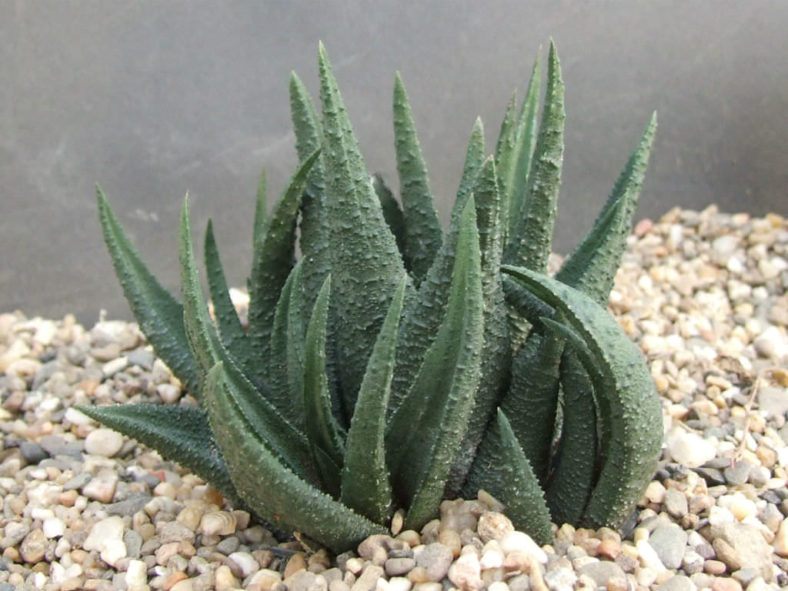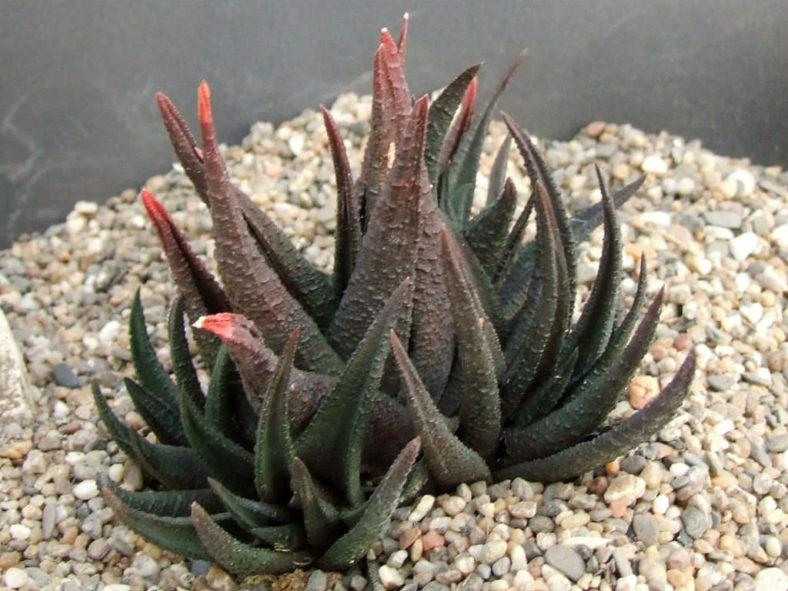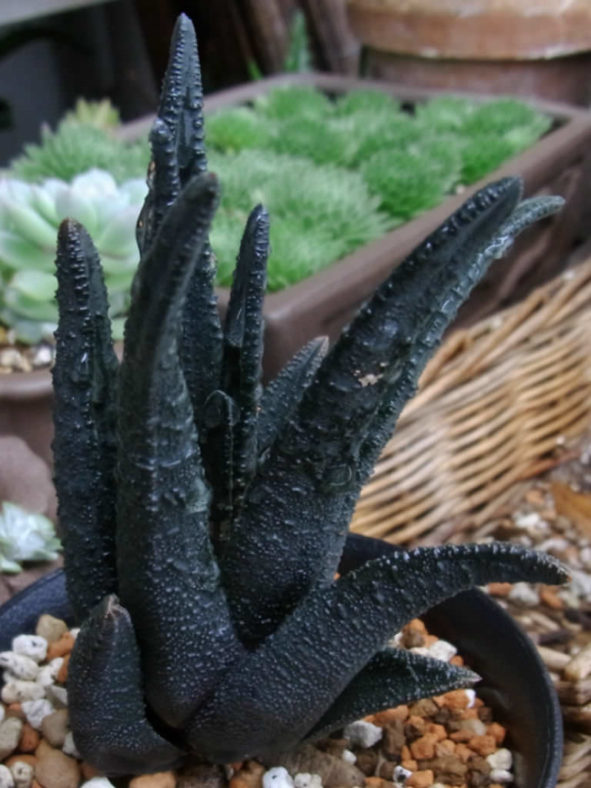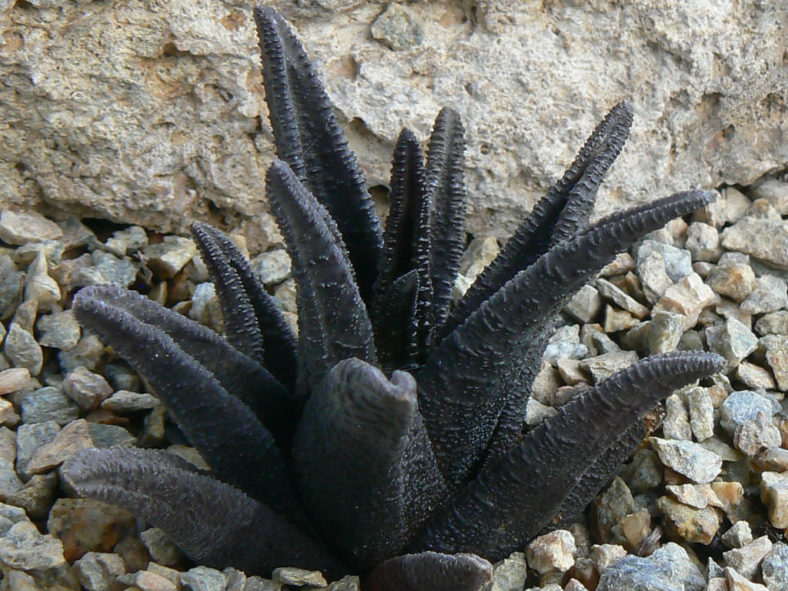Scientific Name
Haworthiopsis sordida (Haw.) G.D.Rowley
Synonym(s)
Aloe sordida, Catevala sordida, Haworthia agavoides, Haworthia scabra subsp. sordida, Haworthia scabra var. sordida, Haworthia sordida, Haworthia sordida var. sordida
Scientific Classification
Family: Asphodelaceae
Subfamily: Asphodeloideae
Tribe: Aloeae
Genus: Haworthiopsis
Etymology
The specific epithet "sordida (SOR-deh-dah)" means "dirty" and refers to the accumulated dust on the leaf surfaces.
Origin
Haworthiopsis sordida is native to South Africa (Eastern Cape).
Description
Haworthiopsis sordida, formerly known as Haworthia sordida, is a slow-growing succulent that forms stemless, usually solitary rosettes of very dark green leaves. The rosettes can grow up to 4 inches (10 cm) in diameter. The new leaves are finely tubercled and curve outward, while the older ones are more erect and almost without tubercles.
The white flowers appear on long, slender stalks from late winter to early summer.

How to Grow and Care for Haworthiopsis sordida
Light: Although most species can tolerate full sun, Haworthiopsis plants thrive in semi-shaded positions. Any window in your home or office will likely be an appropriate setting for H. sordida.
Soil: Plant your H. sordida in a commercial soil mix specially formulated for succulents, or make your own well-draining potting mix.
Hardiness: Haworthiopsis like warmer temperatures in the summer but cool in the winter. H. sordida can withstand temperatures as low as 30 to 50 °F (-1.1 to 10 °C), USDA hardiness zones 10a to 11b.
Watering: In spring and fall, when the growth is most active, water H. sordida thoroughly, then wait until the top of the soil dries out before watering again. Water your plant less during the winter when its growth slows down significantly. When this plant is mostly dormant during the hottest summer months, water it just enough to keep the leaves from shriveling.
Fertilizing: Haworthiopsis are slow-growing succulents and do not require much fertilizer. Therefore, feed with a dilute fertilizer and only from spring to fall.
Repotting: When H. sordida has outgrown its container, repot it into a new, slightly larger pot with fresh soil in the spring or early summer.
Propagation: Haworthiopsis are mostly and easily grown from stem cuttings or by removing offsets from the mother plant. Remove offsets and stem cuttings during the warmer months. H. sordida can also be propagated by seeds. Sow the seeds in spring.
Learn more at How to Grow and Care for Haworthiopsis.
Toxicity of Haworthiopsis sordida
Haworthiopsis species are generally non-toxic to humans and animals.
Varieties of Haworthiopsis sordida
Links
- Back to genus Haworthiopsis
- Succupedia: Browse succulents by Scientific Name, Common Name, Genus, Family, USDA Hardiness Zone, Origin, or cacti by Genus
Photo Gallery
Click on a photo to see a larger version.


